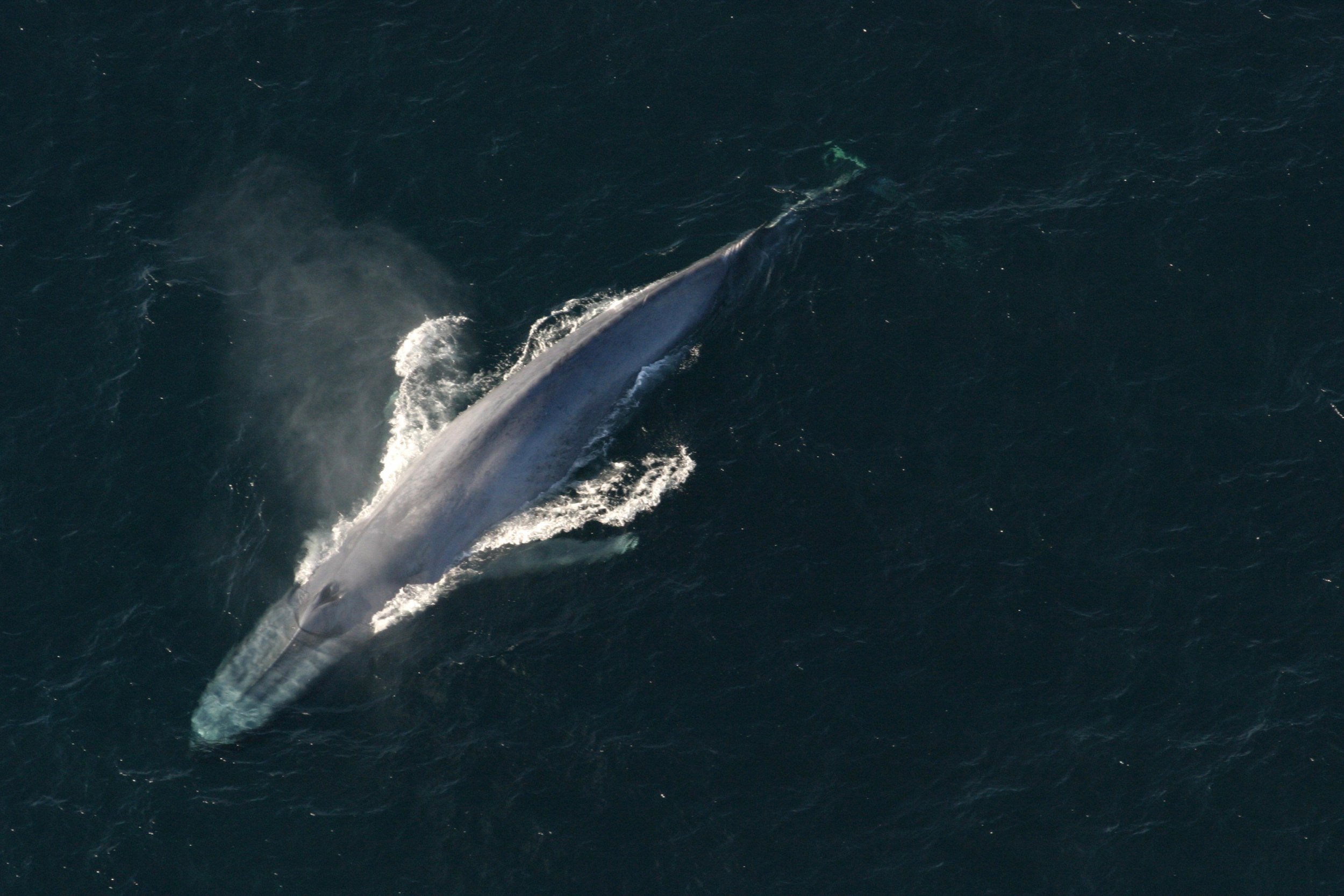
The biggest animal on Earth is the blue whale, a filter feeder that traces its evolutionary heritage back to four-legged toothy landlubbers. It's a weird story, and one that scientists are still trying to understand by digging deep into the fossil record.
Three separate new papers published this week in the same issue of the journal Royal Society Open Science detail new fossil whale discoveries. Two of those papers try to pin down the origins of baleen, the wall of thin bones in a whale's mouth that the animals use to strain tiny organisms out of ocean water. The third identifies a Peruvian animal that is the distant ancestor of the weirdest dolphin alive today.
The origins of baleen have been a particular stumbling block for scientists, who don't understand how the whales lost their teeth and gained these portable sieves. "We still have a long way to go for the real missing link between toothed whales to true baleen whales," Cheng-Hsiu Tsai, who studies ancient whales at the National Taiwan University, said in an email interview with Newsweek.
Read more: Scientists Inflated Dead Dolphin Penises to Fake Sex With Dead Dolphin Vaginas
Tsai is the lead author of a paper identifying what is now the oldest whale with baleen, which lived near what is now New Zealand about 27.5 million years ago. And given what Tsai and his colleagues found in their genetic analysis, they think it might be the true trend-setter, the very first whale with baleen that ever lived.
But at about the same time, a very different baleen whale lived off the coast of Washington state. "It is an ancestor to baleen whales and yet it's got a mouthful of big, gnarly looking teeth," Carlos Peredo, lead author on the paper and a doctoral student at George Mason University in Virginia, told Newsweek. "These teeth were designed to grab, they're not there for show, they're there for processing food in the way that a dog would, in the way that a cat would."
The discovery undermines one theory scientists had, which was that baleen had evolved first between the individual teeth, "so you get like two for one, you get tooth and baleen in one organism," Jorge Velez-Juarbe, a curator of marine mammals at the Natural History Museum of Los Angeles County who wasn't involved with any of the new research, told Newsweek.
If that seems like a lot of fuss over tens of millions of year old chompers, Peredo says figuring out how quickly baleen developed could have implications for beloved but often threatened species, like humpback whales, blue whales and right whales. "We know we're changing the environment," Peredo said. "What we don't know is how quickly things change in response to that." Sorting out the ancient whales' evolution could reveal how fast their successors might be able to keep up.
Even millions of years after baleen evolved, toothed whales still lurked in Earth's oceans—and that's precisely what the third new paper tracks, identifying a brand new species that lived off the coast of what is now Peru. "It was really an exciting moment: we immediately realized that it was a new genus and that it had something special compared to the other fossils belonging to this family," lead author Giovanni Bianucci, a paleontologist at the University of Pisa in Italy, wrote in an email.
Bianucci and his colleagues realized that that strange fossil was the distant ancestor of what Velez-Juarbe calls one of the weirdest marine mammals living today, the Ganges river dolphin, which unlike its relatives lives in freshwater. It is now considered endangered. But when Bianucci's fossil was alive, "his group was a highly successful group," Velez-Juarbe said, with related species of many different sizes living on fairly close terms.
All the researchers said there are likely to be plenty more discoveries. "It's a pretty hopping field of paleontology right now," Peredo said, with more researchers dedicated to the task and better technology to assist, like the incredibly high-powered CT scanner he used in his research.
"There's always something new being discovered, Velez-Juarbe said. "The discoveries are coming faster than we can include them in our own work."
Uncommon Knowledge
Newsweek is committed to challenging conventional wisdom and finding connections in the search for common ground.
Newsweek is committed to challenging conventional wisdom and finding connections in the search for common ground.
About the writer
Meghan Bartels is a science journalist based in New York City who covers the science happening on the surface of ... Read more





